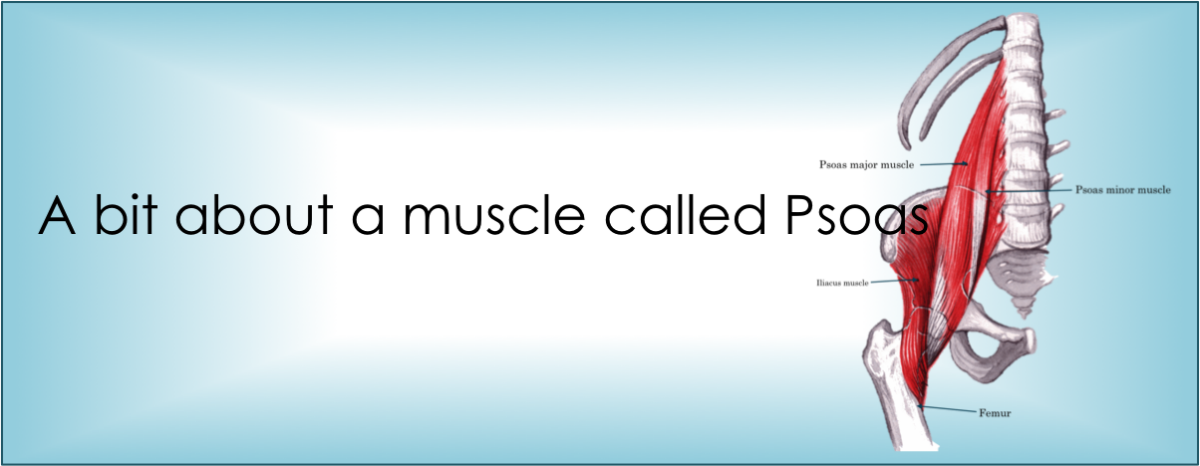Today’s post is about the Psoas muscle.
The reason I have chosen to write about this particular muscle is because of the challenges it has presented to many people, including myself.
So what is the Psoas?
This muscle group (pronounced So-as) may be one of the most important muscle groups in the body. They are the primary connections between the spine and the legs. Just the simple movement of getting out of bed would not be possible without them.
Commonly referred to as ‘hip flexor’ muscles, they affect your posture and help to stabilize your spine. They also help to move your legs forward when you walk or run. These same muscles flex your body forward when you bend over to pick up something from the floor. They also support the internal organs.
The diaphragm and the psoas muscles are also connected to the other hip muscles and the diaphragm. These connections between the psoas muscle and the diaphragm literally connect your ability to walk and breathe. Also how you respond to fear and excitement.
When startled or under any type of stress, your psoas contracts. This means that the psoas has a direct influence on the fight-or-flight response!
How does the Psoas become a challenge?
During prolonged periods of stress, your psoas is constantly contracted. The same contraction occurs when you sit for long periods of time, engage in excessive running or walking, sleep in the foetal position, or do a lot of sit-ups. All of these activities compress the front of your hip and shorten your psoas muscle.
Many people, from office workers to professional athletes, suffer from chronic tightness in their psoas. This can be a result of overuse (like athletic training) or limited movement (like sitting down all day), even physical and emotional trauma have been linked to psoas tension.
A tight (or short) psoas muscle can cause pain in the lower back or hips, especially when lifting your legs. Usually stretching the muscles and releasing the tension is the best way to prevent it. However, while most people with psoas issues have tight muscles, there are some people whose issues may be caused by overstretching. In this case, if you try stretching an already overstretched muscle, you can cause more problems. It takes time and daily attention to keep these muscles relaxed, stretched, and strong.
There are several symptoms that may indicate a psoas imbalance. These include knee and/or lower back pain, postural problems, sciatica and leg length discrepancy.
The key is find out what condition your psoas is in to determine the treatment. If the muscle is short and tight and needs stretching. If the muscle is weak or overstretched it may need strengthening.
This is where a health care professional is required to rule out other conditions and injuries. You may need a physical exam of your back and hip and diagnostic tests. Consider a practitioner who is experienced in biomechanics and who can address any potential pelvic distortion, joint restrictions, foot pronation, and hip and knee imbalances.
Some chiropractors and massage therapists also have experience in treating psoas conditions.
My own challenge has been dealing with tight psoas muscles. Personally I found that a physiotherapist was able to assist in correcting the issue, along with stretches and exercises that I work through often to ease tension.
I hope that you found this information interesting.
Till the next post,
Live Clean n Prosper
(Sources – www.drnorthrup.com, PubMed, Wikipedia, The Psoas Book by Liz K

